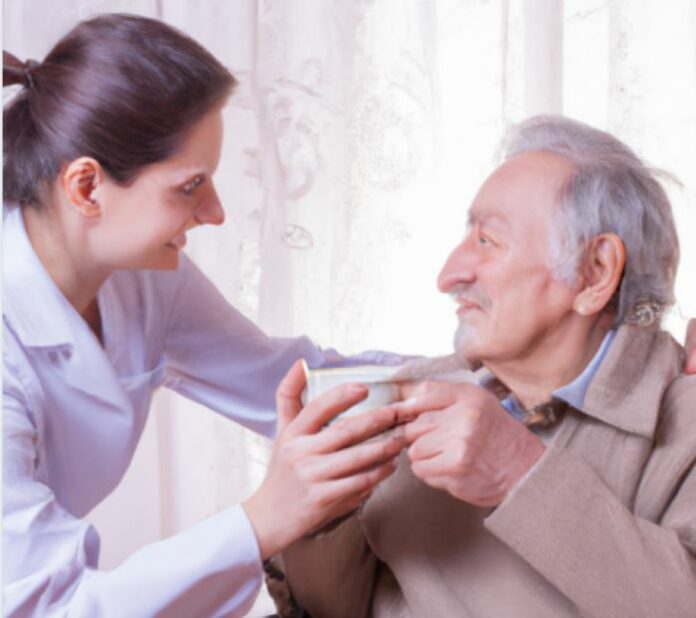The American Occupational Therapy Association, (AOTA) Bethesda, MD…Occupational therapy will figure prominently in the launch of the Health Care at Home Initiative to Help Advance Health Equity. The Initiative aims to better position the Food and Drug Administration (FDA) to address health care needs by moving care into the home setting. Based within the FDA’s Center for Devices and Radiological Health (CDRH), the Initiative cites advancing health equity as one of three key strategies. AOTA will be represented on the Steering Committee for the FDA Initiative, underscoring the role of occupational therapy as a key practice area of expertise, as occupational therapy practitioners (OTPs) are creative problem solvers who deliver health solutions to people from birth through aging.
To accomplish the goals of the FDA’s Initiative, the agency has formed partnerships with a range of problem solvers who will be able to help design features of a home that could accommodate this transformation of healthcare. The American Occupational Therapy Association (AOTA) was asked to join the FDA network of experts, citing the member organization’s knowledge and expertise in the field of occupational therapy will be crucial to the conversation.
AOTA has identified two experts to assist in this work: Sabrena McCarley, MBA-SL, OTR/L, CLIPP, RAC-CT, QCP, FAOTA, RAC-CTA, Director of Clinical Reimbursement, Transitional Care Management and Beth Pyatak, PhD, OTR/L, CDCES, FAOTA, Associate Professor, USC Chan Division of Occupational Science and Occupational Therapy.
The initiative is set to begin in May. McCarley said, “As occupational therapy practitioners, we possess a distinctive lens through which we engage with our residents, conducting thorough assessments grounded in the occupational therapy profile. This approach enables us to delve deeper into understanding our residents’ needs. I am thrilled to contribute to this exceptional journey, which promises to propel healthcare forward and underscore the significance of occupational therapy.”
Pyatak added, “For people with chronic conditions, the vast majority of healthcare takes place in the home, but healthcare devices and technologies were not designed to seamlessly integrate into the home environment. OTPs’ expertise and holistic understanding of how people live their daily lives can help make the home an optimal place to manage health.”
FDA Information
The following excerpt from the April 23, 2024, FDA press release announcing the initiative is attributed to Jeff Shuren, M.D., J.D., director of the FDA’s Center for Devices and Radiological Health (CDRH) and Michelle Tarver, M.D., Ph.D., deputy director for transformation at CDRH.
“Clinical care is undergoing an evolution that has been accelerated over the last few years by the COVID-19 public health emergency. Health care has primarily been centered on health care systems and their components—hospitals, clinics, providers, and payers. However, many challenges persist, such as primary care physician and specialist shortages, significant increases in health care costs, higher chronic disease prevalence rates, and often the inability to meet the health care needs of millions of people who have no or limited access to health care systems. People from various racial and ethnic minority populations and those who live in rural communities and lower-income neighborhoods are impacted the most by these system challenges, which furthers health disparities across the nation…The launch of a new initiative, Home as a Health Care Hub, to help reimagine the home environment as an integral part of the health care system, with the goal of advancing health equity for all people in the U.S.” Read the full FDA press release.
This federal partnership will ultimately better position occupational therapy practitioners to deliver much-needed services to clients in their homes. AOTA Vice President of Regulatory Affairs Sharmila Sandhu, J.D. said, “the occupational therapy approach promotes awareness of the relationship between daily activities and roles, context and environment for individuals with chronic conditions. Including occupational therapy expertise in developing this prototype will allow policymakers to be well positioned to consider how a currently fragmented health care system with significant disparities can instead be modeled to effectively deliver coordinated, holistic care in the home.”
What is Occupational Therapy?
OT is a science-driven, evidence-based healthcare profession that enables people of all ages to participate in activities of daily living or “occupations,” and to live better with injury, illness, or disability. Occupations encompass just about anything a person does or experiences that makes life meaningful, including going to work, driving, sexual function, eating, drinking, playing, cooking, recovering from injury, addressing disability, living with disease, mental health, personal hygiene, women’s health, coping with violence, veteran’s health, sports, addiction, and aging. When there is injury, illness, or disability, these activities can be disrupted.
OT is often called “the ultimate problem-solving profession” because of the creative approach occupational therapy practitioners (OTPs) can take to help people be as functionally independent as possible. From a child with autism to a wounded warrior with a double amputation to an older adult aging in place, the stories in this video highlight occupational therapy’s impact on children and adults living with a range of challenges.
About AOTA
Founded in 1917, AOTA represents the professional interests and concerns of occupational therapists, assistants, and students nationwide. The Association educates the public and advances the profession of occupational therapy by providing resources, setting standards including accreditations, and serving as an advocate to improve health care. Based in North Bethesda, Md., AOTA’s major programs and activities are directed toward promoting the professional development of its members and assuring consumer access to quality services so patients can maximize their individual potential.


